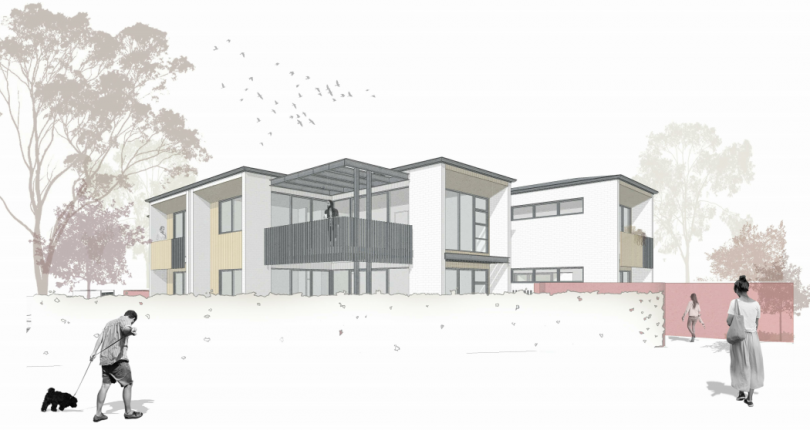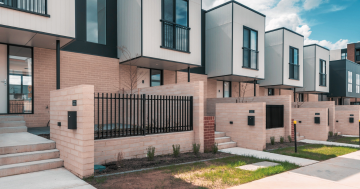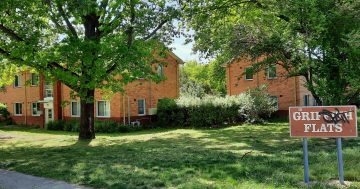
The proposed Manor House in Griffith: will look like one home but really be four. Image: Rob Henry Architects.
It may be hard for many to give a toss about yet another planning row in leafy Griffith in the inner south, as privileged an enclave as there is in Canberra, but there are wider ramifications at stake that may mean your suburban patch ends up denser and more crowded.
The so-called Manor House proposal at 20 Blaxland Crescent, a corner residential block opposite St Edmund’s College, is part of the ACT Government’s Demonstration Housing Project, designed to explore novel housing types.
The owners want to bulldoze their single residence and replace it with a two-storey, four-unit complex with nine car parks.
But don’t call it a block of flats because it is designed to look like a single residence and fit in with the Griffith urban landscape.
The only problem is the area is zoned RZ1 for low-rise, low-density housing and a one-off change to the planning rules, Draft Variation 375, is required for the project to proceed.
As you’d expect, local community groups are incensed, calling it the thin edge of the wedge and a precedent that will see the neighbourhood turned into Swiss cheese for developers.
The project has a history going back more than a couple of years, and with one of the owners being an ACT public servant in the City Renewal Authority, it also required a conflict of interest hurdle to be cleared.
No one is suggesting any impropriety throughout the application process, but the fact that an RZ1 property in an area where densification is a hotly contested issue was cleared to be part of the Demonstration Housing Project, and is now at the point of changing the rules to accommodate it, raises questions.
Apparently, the Manor House model is common in NSW, so why it can’t be studied in that setting is a mystery.
One may give it a fancy or more acceptable name, but it is not a house. If the government wants to see how it would work in Canberra, it should be developed in a more appropriate RZ2 zone where medium-density multi-unit development is allowed.
The planning system may be broken, as Chief Planner Ben Ponton has admitted, but a one-off exemption for a single project like this shows contempt for the rules that we still have to adhere to and does set a precedent.
Many a DA point to developments of a similar nature nearby to justify their size.
If this project proceeds, what is to stop similar ones popping up in single residential areas across Canberra, changing the character of neighbourhoods, adding to traffic and possibly reducing property values, unless, of course, they can also be redeveloped?
No doubt for landowners and developers, there is a strong business case for converting a single home into four.
And when Canberra needs more homes, particularly closer to the city, the Manor House model is possibly less offensive and sits well with the government’s infill policy.
There is nothing wrong with exploring different housing models – especially what’s called the ‘missing middle’ of low-rise, medium-density – but they need to be in the right place, with the right zoning and not chip away at what is left of the planning system’s integrity.
With the vaunted planning review still years away from completion, the government shouldn’t be messing with the system like this.




















